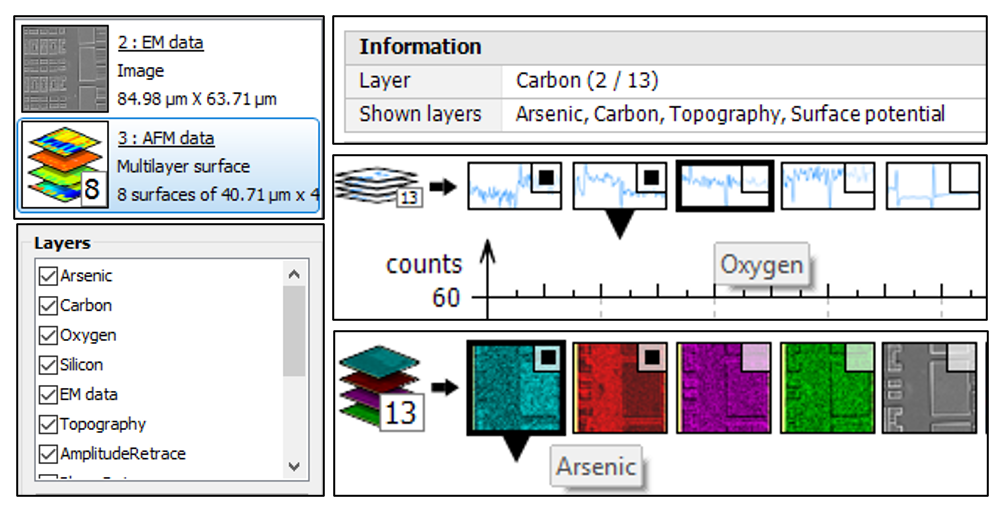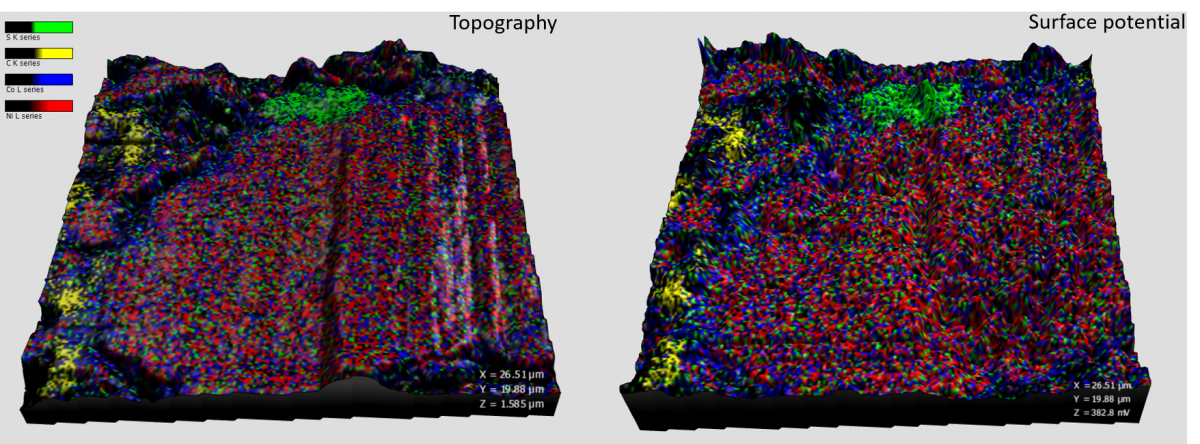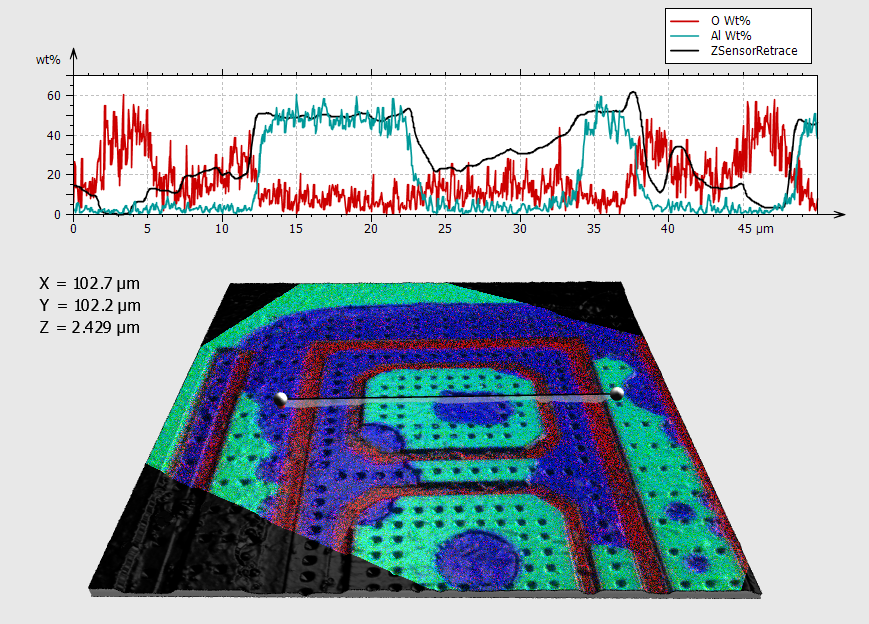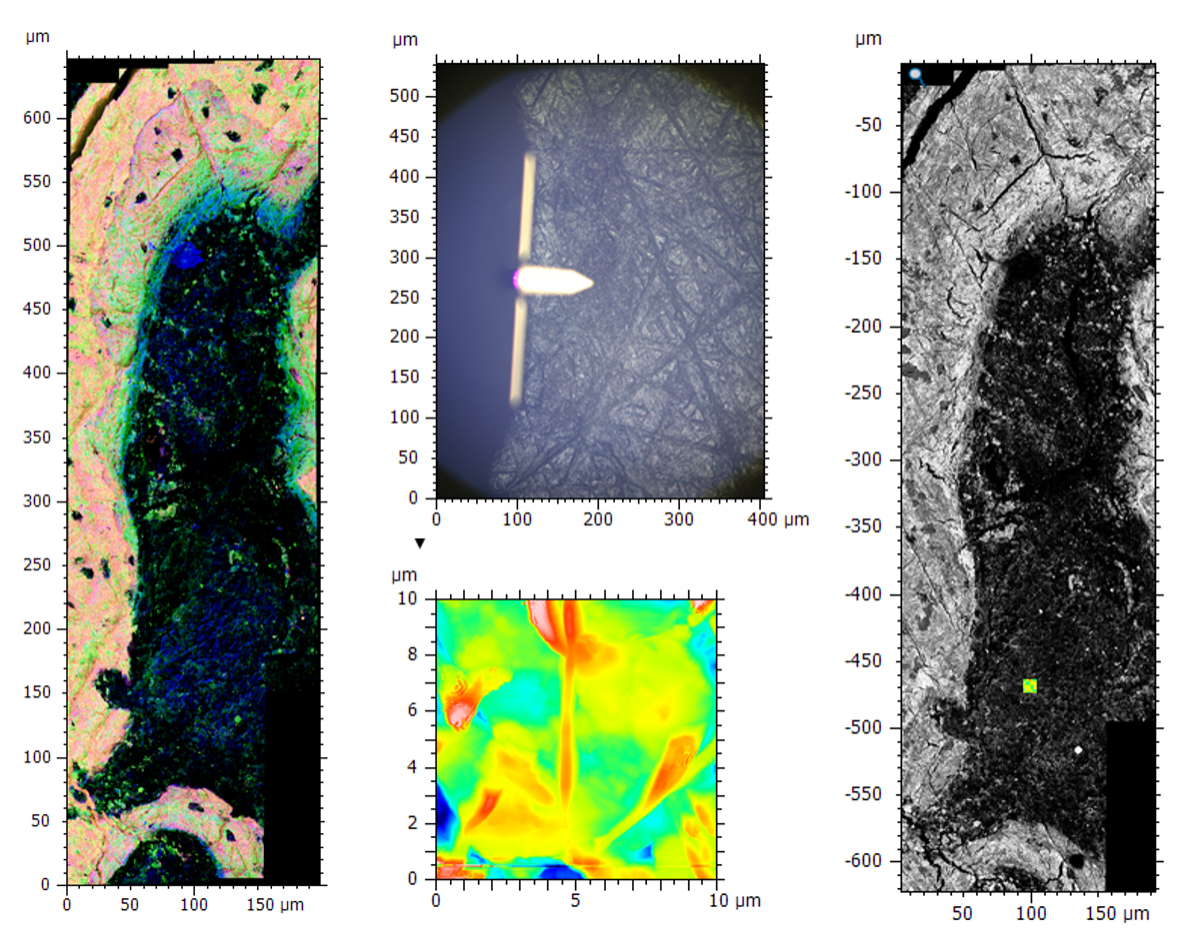产品
FIB-SEM
Nanomanipulators
OmniProbeOmniProbe Cryo软件
AZtec3DAZtecFeatureAZtec LayerProbeTEM
Hardware
EDSUltim MaxXploreImaging
软件
AZtecTEM
3rd March 2021 | Author: Dr Louise Hughes
Correlative microscopy is an exciting technique with several challenges in both the acquisition and analysis of data. Relate, our correlative data analysis software, enables you to correlate images from a wide range of microscopes with flexible display options for viewing multiple images together. It provides access to the quantitative information available with analytical microscopy techniques, for example, measurements from atomic force microscopy (AFM) or x-ray counts from energy dispersive x-ray spectrometry (EDS).
The processing and analysis of correlative data involves multiple steps. Several of these have been covered in our webinar, tutorial, and on our Relate webpage. Workflows are key to establishing efficient data analysis. Below is an example workflow with a few tips and tricks for each stage.
Rename studiables and layers within your files using the STUDIABLE menu. This makes it easier to select the right files and layers in subsequent steps.

Image showing screenshots of dialogue boxes allowing you to select different studiables and different layers within the studiable (left) and images from studiables with the shown layers information and the names of thumbnails (right). Renaming these layers at the start makes selection further down the workflow much easier.
Once imported there are several functions in the OPERATORS menu that enable you to get the best from your data and make it easier to align files from different imaging modalities.
There are some simple functions that can help with your data correlation.
Once done make sure you EXTRACT ALL to produce a multilayer studiable containing all the layers of your correlated data. Alternatively, use EXTRACT SELECTION if you have layers that were important for alignment, but which are no longer required for subsequent analysis.

Image showing EDS maps of a battery sample displayed using different AFM measures for the height. Topography (left) and surface potential (right).
Enhance the visualisation of your correlated data using these simple tips.

Image of coloured multi-layered profiles showing the wt% of oxygen (red) and aluminium (green) against the topography (black). The position of the profile line is shown in the 3D data display at the bottom.

Image of bone tissue showing a large area montage EDS and BSE map (left), the optical image and AFM topography data (middle) and the correlated BSE and AFM data (right). The relative scales meant the optical image showing the AFM tip was required during correlation for the rough positing of AFM data before fine alignment with the higher resolution images.
Often when data is acquired on different microscopes it is at different magnification scales, which can provide a challenge for both the initial acquisition and the correlation of the data for analysis. The best way to deal with this situation is to take images at a range of magnifications making sure that there are common features visible in each magnification stage and some form of guide indicating where on the image the higher magnification data was acquired. In some cases, this may involve the use of optical images, as with the example shown above. AFM data acquisition was on a tiny area within the large EDS and backscattered electron (BSE) maps, making it very difficult to find the same region for correlation. During data acquisition we recorded the optical image from the AFM, showing the relative position of the tip. We could use this as a rough guide for initial placement of AFM data with fine adjustments made using BSE and EDS images.
These are just a few of the functions available in Relate to try and there are many more for you to discover. Everything you do in your Relate document is recorded in the workflow pane. This is a helpful tool to navigate within your document and provides a record of each process and new studiable, allowing you to revisit any step if required. It is also possible to set a Relate document up as a template and the workflow pane can be used to insert new studiables at the start.
Hopefully, these tips and tricks will help improve your correlative data analysis. If you are interested in learning more about these workflows as well as the steps involved in the acquisition of correlated data, please register for our next Relate tutorial to learn more.
We send out monthly newsletters keeping you up to date with our latest developments such as webinars, new application notes and product updates.
 公安机关备案号31010402003473
公安机关备案号31010402003473